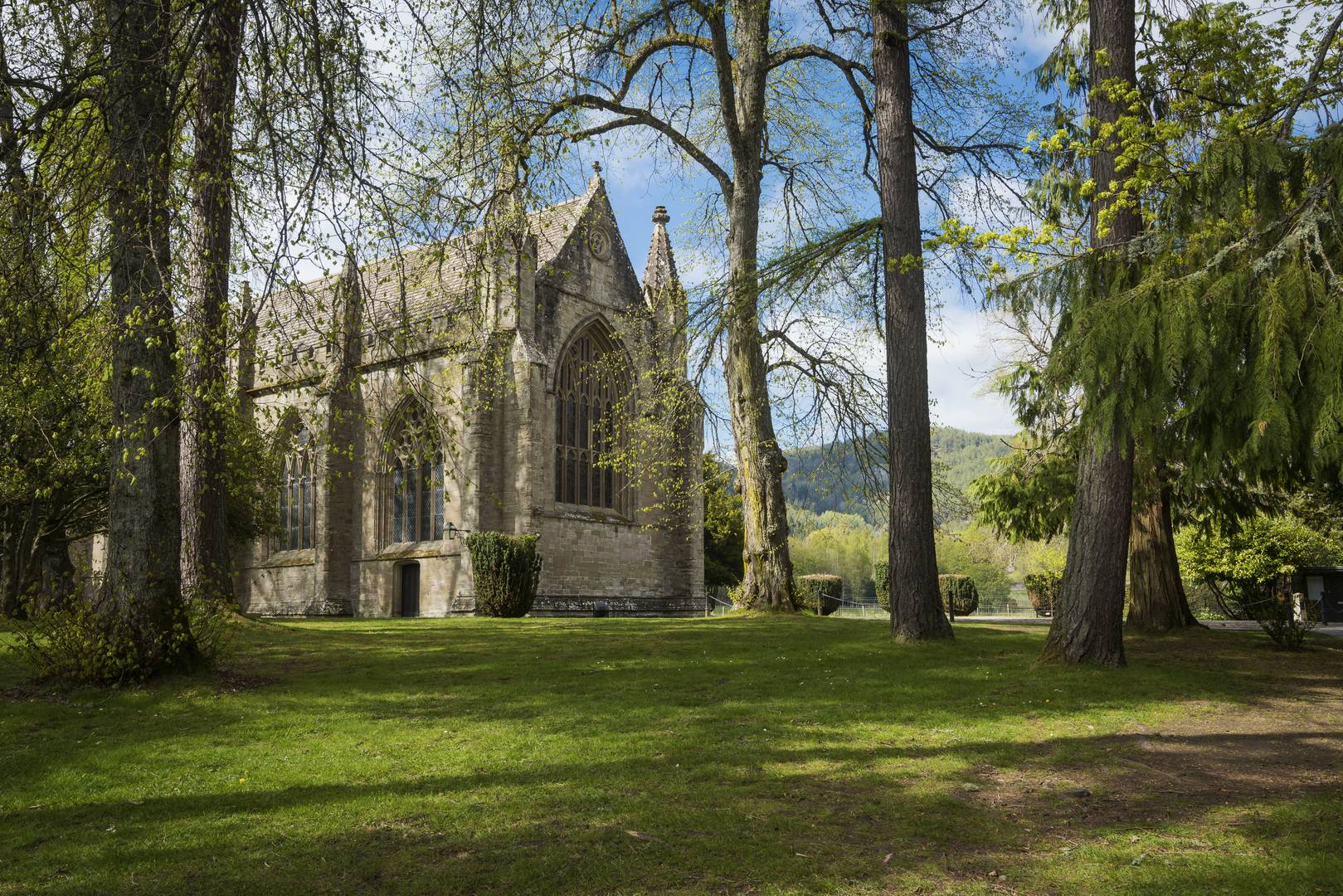Dunkeld Cathedral

In 849, relics of St Columba were removed from Iona to protect them from Viking raids. They were brought to Dunkeld by King Kenneth MacAlpin, who appointed a bishop at Dunkeld. Columba became the patron saint of Dunkeld and its monastery. The see was revived in the early 1100s, when Cormac became Bishop of Dunkeld. The cathedral developed over about 250 years, and the earliest surviving part is the choir of the late 1200s. It later became a parish church. The nave was begun in 1406, and lost its roof shortly after the Protestant Reformation of 1560. There are paintings dating from the 1500s on the vault of the bell tower's ground floor, which once served as an ecclesiastical court. There are also fine memorials in the choir (not in our care), including the effigy of Alexander Stewart, Earl of Buchan, notorious as 'The Wolf of Badenoch'.
Dunkeld Cathedral
In 849, relics of St Columba were removed from Iona to protect them from Viking raids. They were brought to Dunkeld by King Kenneth MacAlpin, who appointed a bishop at Dunkeld. Columba became the patron saint of Dunkeld and its monastery. The see was revived in the early 1100s, when Cormac became Bishop of Dunkeld. The cathedral developed over about 250 years, and the earliest surviving part is the choir of the late 1200s. It later became a parish church. The nave was begun in 1406, and lost its roof shortly after the Protestant Reformation of 1560. There are paintings dating from the 1500s on the vault of the bell tower's ground floor, which once served as an ecclesiastical court. There are also fine memorials in the choir (not in our care), including the effigy of Alexander Stewart, Earl of Buchan, notorious as 'The Wolf of Badenoch'.


